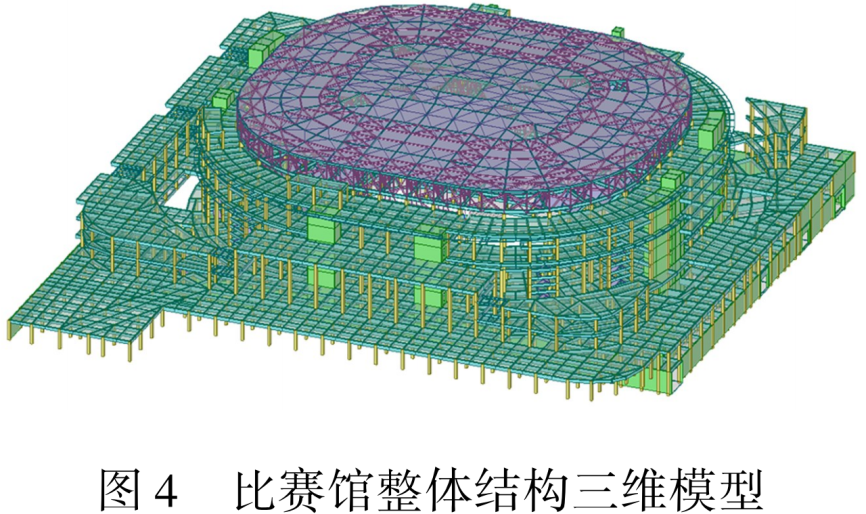Before founding the ruen design research office with Mr.
In 1993, he obtained the expert certificate of government special allowance of the State Council* In 1995, he served as the director of the Department of architecture of Tongji University.
The ultimate success behind each project is reflected incisively and vividly through the significance embodied in the appearance image of the building itself.

Lu Jiwei (1988-1995): graduated from Nanjing Institute of Technology (now Southeast University) in 1960.
From 2014 to 2016, Hu Rushan gave a series of lectures in the school of architecture and urban planning of Tongji University, In 2016 and 2017, he was invited to participate in the theme exhibition planned by Professor Li Xiangning, Dean of the school of architecture and urban planning: towards critical Pragmatism: Chinese contemporary architecture, the autumn main exhibition of Harvard Graduate School of design (GSD), and Busan international architectural culture season, living in Busan, living in Shanghai.
Ruen: an endless journey breaks the line of duty? Let’s take a look at the background of the department heads of Tongji CAUP in previous years: Dai Fudong (1986-1988): admitted to the Department of architecture of National Central University in 1948.
On December 21, at the general meeting of the school of architecture and urban planning of Tongji University, Hu Rushan, the founding partner of ruen, was appointed as the director of the Department of architecture of the school of architecture and urban planning of Tongji University.
In 1994, evergreen was promoted to professor.
Ms.



Hu Rushan graduated from the University of California, Berkeley with a bachelor’s degree in architecture; Later, he received a master’s degree in architecture from Princeton University.
Dai Fudong successively served as vice president, President and honorary president.
Hu Rushan worked in famous construction companies such as Michael Graves, Ralph Lerner architect PC in Princeton, SOM in New York and TAC in San Francisco.
In 1952, he graduated from the Department of architecture of Nanjing University (now the school of architecture of Southeast University)* In 1952, the state assigned Dai Fudong to teach at Tongji University.
From 1979 to 1981, he studied as a master in the Department of architecture of Tsinghua University and obtained a master’s degree* In 1981, he taught in the Department of architecture of Tongji University.
From 1955 to 1960, he studied architecture in Nanjing Institute of Technology (now Southeast University)* In 1960, he served successively as a teaching assistant, lecturer, associate professor, professor and doctoral director of Tongji University* In 1988, he was the director of the Department of architecture of Tongji University.
In 1999, he received his doctorate from the Department of architectural engineering of Dortmund University in Germany* In 2000, he taught in the Department of architecture of Tongji University* In 2015, he was the director of the Department of architecture of Tongji University.
Hu Rushan and Mr.
In 1987, Chang Qing graduated from the Graduate School of the Chinese Academy of Sciences and the Institute of the history of natural sciences with a master’s degree in the history of science.
Zhao Xiuheng (1995-1999): admitted to the Department of architecture of Tongji University in 1956* In 1962, he stayed in school to teach after graduation.

In 1991, Chang Qing graduated from the Institute of architecture of Southeast University with a doctorate in engineering* In 1991, Chang Qing successively engaged in post doctoral work and served as an associate professor in the school of architecture and urban planning of Tongji University.
After graduation, he successively worked in the 6413 army of the people’s Liberation Army, the third division of the first Bureau of the State Construction Commission and the second company of the first Bureau of the State Construction Commission.

Guo Xien jointly founded Neri & Hu, a diversified architectural design company based in Shanghai, China and with branch offices in London, UK.
Guo Xien, Ms.
Cai Yongjie (2015-2021): in 1986, he obtained a bachelor’s degree from the Department of architecture of Tongji University.
From 1983 to 1984, Dai Fudong was sent to the Institute of architecture and planning of Columbia University in New York as a visiting scholar* In 1986, Tongji University added a new school of architecture and urban planning.

Finally, let’s see if it feels very different? Completely foreign background? Hu Rushan (2021 -): graduated from the University of California, Berkeley in 1990..
Based on the research, Neri & Hu is committed to the positive interaction between architecture and experience, details, materials, shapes and lights, rather than simply following the stereotyped style.
This year’s ruen retrospective exhibition “endless journey” is hosted by the school of architecture and urban planning of Tongji University.
Guo Xien and Hu Rushan, founding partners of ru’en, have insisted on creating a new architectural example with the concept of globalization and the design concept of diversity and overlap in many years of design practice.
In 1988, he was an associate professor of the school of architecture and urban planning, Tongji University.
Neri & Hu always believes that research is a powerful tool for design, because each project has its own unique background.
In 1992, he became a professor* In 1999, he served as the director of the Department of architecture.
From 1995 to 2003, Chang Qing served as deputy director of the Department of architecture of Tongji University* In 2003, he was the director of the Department of architecture of Changqing Tongji University.
With the theme of “the continuation of time and the memory of history”, this exhibition traces the important moment of Ron’s architectural practice and the continuous evolution of architectural thought.
In 1989, he served as a member of the academic committee of architectural theory and creation of China Institute of architects.
In 2004, Ms.
Chang Qing (2003-2014): in 1982, Chang Qing graduated from the Department of architecture of Xi’an Institute of metallurgy and Architecture (now Xi’an University of architecture and Technology) with a bachelor’s degree in engineering.
In 1987, he served as a visiting researcher in Japan’s comprehensive research and development institution.

Careful and in-depth research on planning, operation, location, function and history is an indispensable element for creating rigorous works.
Mo Tianwei (1999-2003): from 1962 to 1968, he studied in the Department of architecture of Tsinghua University.
In 1993, he obtained a master’s degree from the Department of architectural engineering of Dortmund University, Germany.




